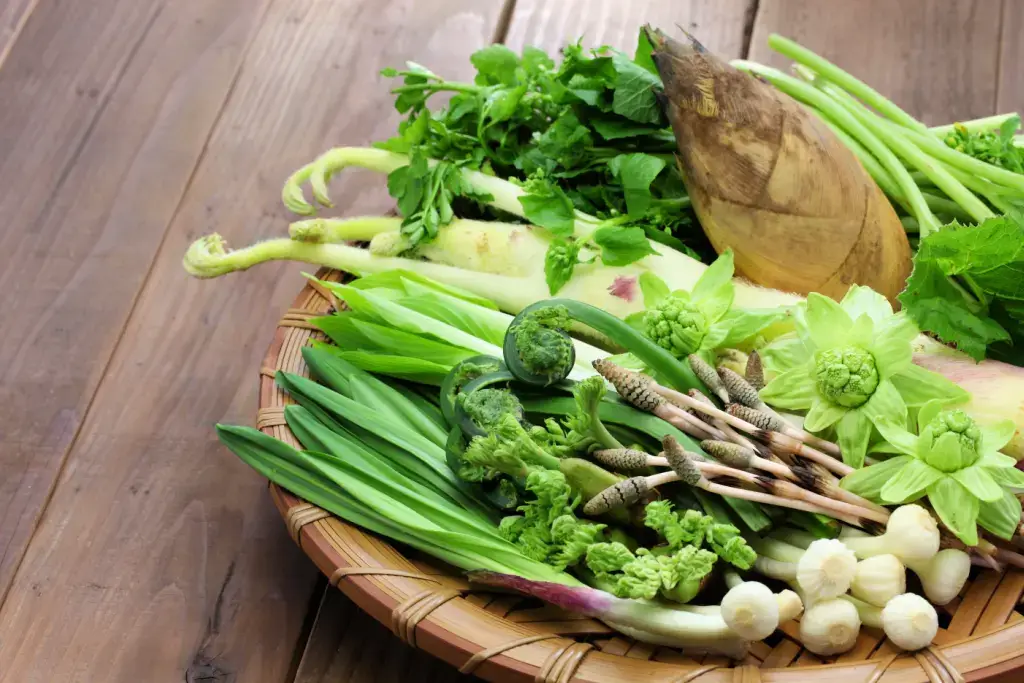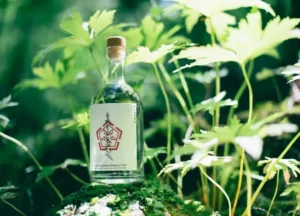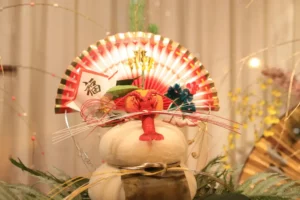With the arrival of spring comes cherry blossoms and delicious vegetables. In particular, mountain vegetables, referred to in Japanese as sansai, are popular and healthy. These vegetables can typically be eaten raw but are more commonly cooked or pickled. We’ll introduce you to five popular mountain vegetables in Japan, including tara no me – the king of all sansai. We will also share how you can prepare and enjoy them.
Table of Contents
ToggleKogomi (ostrich fern)
People recognize kogomi, also known as ostrich fern and fiddlehead fern in English, by its tightly curled young tip. In Japan, supermarkets sell kogomi fresh very quickly during early spring. Although kogomi can be eaten raw, it is incredibly bitter. Therefore, people usually dry and boil it before consuming it. Once prepared, the taste is similar to that of asparagus.

Some common ways of preparing Kogomi are marinating it in a dashi soy-based sauce or battering and frying it as tempura. Another popular way of preparing it is by blanching it and then dressing it with sesame. Kogomi is rich in antioxidants, potassium, and Vitamin A, making it a great healthy side dish to any meal.
Shungiku (chrysanthemum greens)
People know shungiku as chrysanthemum greens or chop suey greens in English. In the West, people usually use these greens for decoration. However, in Japan, people use them in various dishes. The greens have an aromatic and bitter taste with a slight peppery flavor. During the early spring, when the weather can be cool, people commonly add shungiku to hotpot dishes.
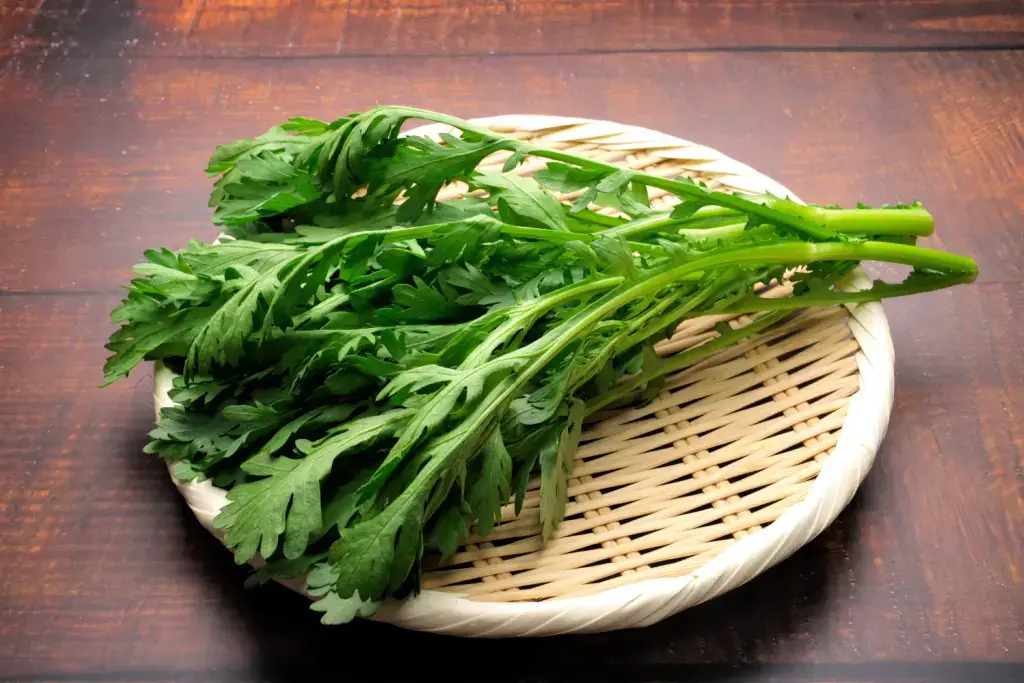
People usually see shungiku in salads, including tofu or sesame seed salad. Adding shungiku to any dish is very healthy because it is rich in calcium, potassium, and Vitamins A, C, and K. During the Muromachi period (1336-1573), people prized shungiku for its medical benefits. It was known to boost recovery and resistance. So, if you want to add something to a meal to help you recover, add some shungiku!
Are you looking for traditional snacks this season? Check out Sakuraco! Sakuraco delivers traditional Japanese snacks, teas, sweets, and snacks from Japan to your door every month so that you can enjoy Japan’s taste anywhere!
Fuki (butterbur plant)
Fuki, also known as butterbur in English, is one of the earliest-growing spring vegetables, commonly coming from the snow. It has a distinctive aroma and a slightly earthy and bitter flavor. Fuki is very nutritious and packed with vitamins, calcium, and fiber. The fiber in fuki can help boost digestion if you’re having a heavy meal. However, its bitterness is tempered by cooking them in various ways. You can eat both the buds and the stems of the plant.
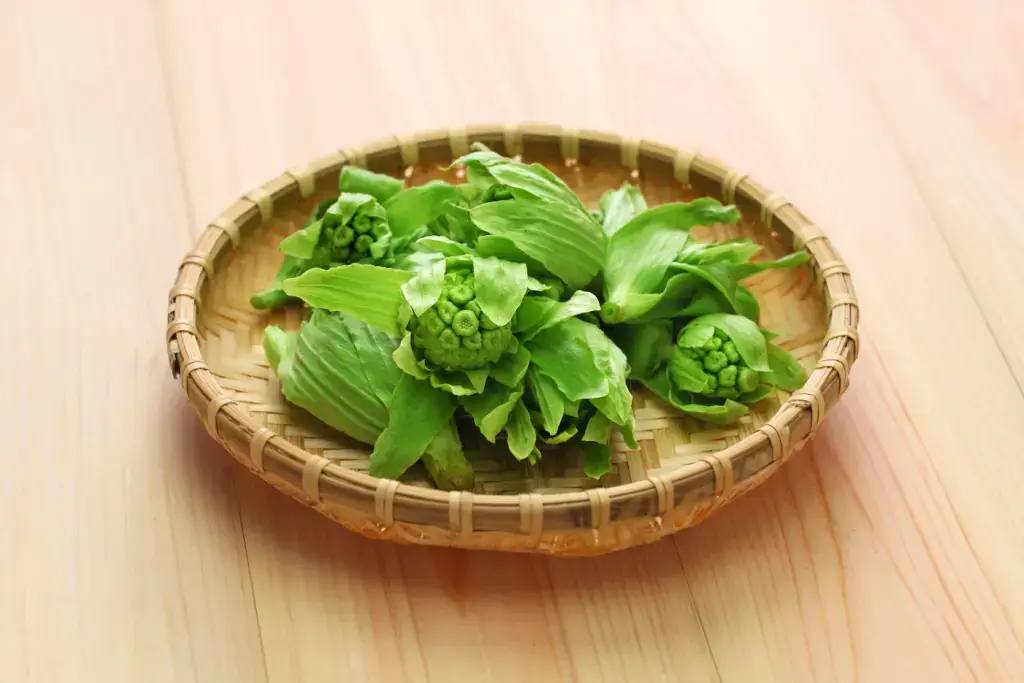
People usually make the buds into tempura or sauté them and mix them with miso. The stalks of fuki are usually simmered or boiled and topped with Japanese seasonings like dashi, soy sauce, and mirin. However, you can also enjoy fuki by boiling them even without seasoning. A typical dish made by simmering the stalks in soy sauce broth is kyarabuki.
Yama Udo (mountain asparagus)
In English, people call yama udo “mountain asparagus.” It is a vegetable that usually grows underground. People separate the shoots into the more rigid outer and tender inner stems. The shoots and leaves of yama udo can be eaten, but the outer layer of this wild vegetable is not edible. They can eat it once people peel and thinly slice the inner layer.

The stalks of yama udo have a distinct scent and a slight fennel, lemony taste that can be slightly bitter. People do not need to boil yama udo to enjoy it. However, it’s best to soak the stems in water with a bit of vinegar for 30 minutes due to its firm texture. After soaking, people can eat the stems raw, grilled, or sautéed. People often pickle yama udo’s stems in miso (fermented soybean paste) while making the leaves into tempura or salads. Yama udo is rich in copper, folate, and potassium, making it a healthy addition to any meal!
Tara no Me (angelica)
In English, tara no me or angelica is seen as the “king of all sansai vegetables”. Tara no me, are the fresh shoots of the Angelica tree plant. The shoots are usually harvested between April and early June. The shoots of this vegetable are too bitter to be eaten raw. So boiling or soaking the shoots before cooking is essential to remove their strong astringency. It is ideal to make tempura out of the shoots.
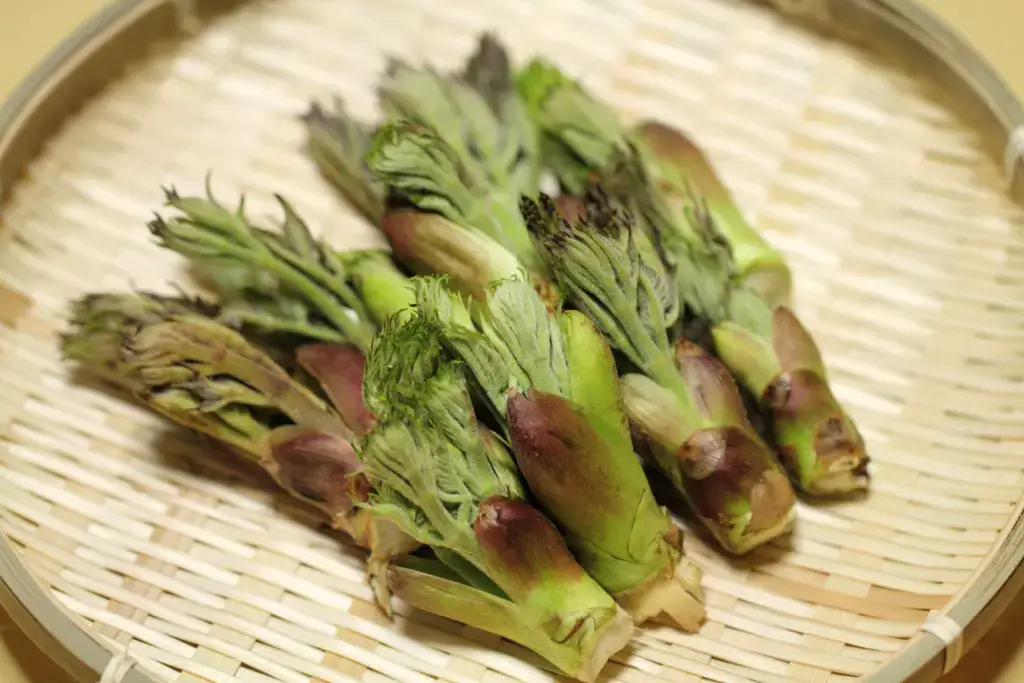
Wild tara no me, while bitter, has an herbal, earthy taste. It is very nutritious, especially when picked during their peak time. It also has a high mineral content, especially potassium. Additionally, it’s rich in Vitamin K and also has beneficial plant fat and high-quality protein, with some people referring to it as the “butter of the mountains”. If you’re looking for a healthy fried snack, try out tempura tara no me!
Why should I try these sansai vegetables?
Seasonal eating is a great way to maintain a healthy lifestyle and enjoy what the season offers. In particular, mountain vegetables, such as minerals and vitamins, are highly nutritious. Most importantly, these vegetables are easy to prepare and cook! These vegetables can be a great addition to any meal and help with recovery or digestion. Which Sansai vegetables do you want to try? Let us know in the comments below!


